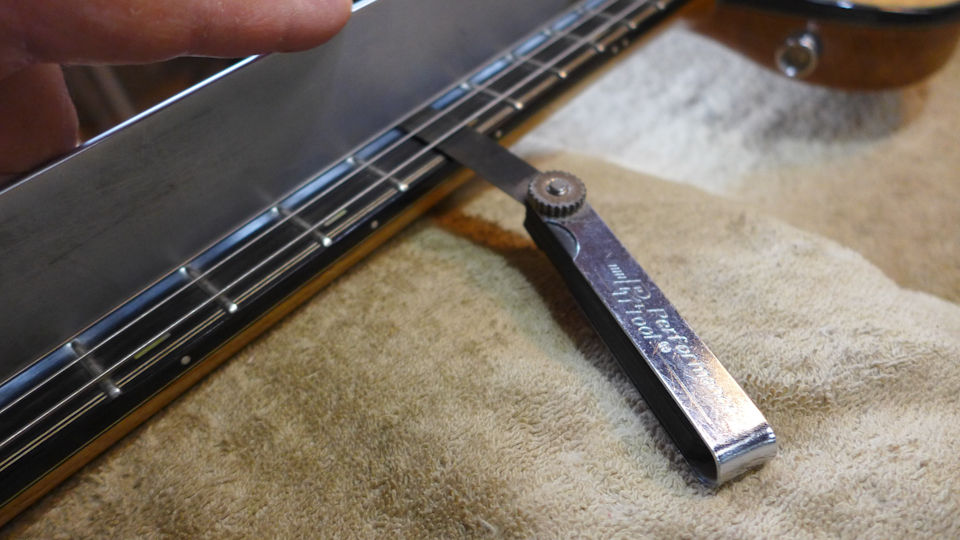How to properly adjust your intonation
- neworleansguitar
- Sep 24, 2024
- 4 min read

Experience has shown me how most people are somewhat apprehensive about making adjustments to their own gear, usually for fear of screwing something up beyond easy repair. Like most things, once you understand the inner workings of these machines, that becomes less of a concern.
Even though the dimensional fluctuations of wood may seem insignificant, in the world of musical instruments, those changes are usually sufficient enough to require periodic adjustments to one’s gear. I am a firm believer in knowing your instrument intimately so as to confidently make some of these changes yourself.
Knowing how to adjust your intonation, I think is one of those crucial skills that every guitar player should work towards.
As with any fixed bridge guitar, you are at the mercy of whoever located that hardware during its making and quite often guitars will have a limited window of accuracy. Although one might hope for perfection, not always is this the case and you should know that this is often a matter of compromise.
Your guitar’s action is going to dictate the location of your saddles, so before making any changes for intonation, you should check to make sure that your action is as it should be. I find that for most guitars, the following specs seem to work best.

Measuring beneath the string to the top of the fret at the 12th fret, you should have a gap of about 4/64” on the low E, 3/64” on the high side.
Truss rods should be set so that .007” is the gap beneath a standing straight edge, measuring around the 7th or 8th fret. Just a slight drag beneath is all that you need.

Nut slots should allow for a string pressed at the 3rd fret to just barely clear the first fret with little gap beneath.

You’ll find your guitar’s scale length by measuring from the leading edge of the nut to the peak of the 12th as being half of your scale length. In the case of my guitar builds, that measurement is taken from the peak of the zero fret. As a good starting point, your saddles should fall roughly 1/16’’ beyond the scale on the high side, 3/16” beyond the scale on the low side.

This measurement is simply a good starting point as we will adjust from here by ear.
Going forward you should have a decent chromatic tuner as I find it helpful to have a numerical readout for cents sharp or flat, or some sort of visual reference for such. Nothing too fancy is needed here, eventually you will come to hear it, feel it.

As we begin to hone in on things a good place to start is at the 12th fret. The open string, or the 12th harmonic, when compared to the 12th fretted note will indicate whether that string needs to be longer or shorter, adjusting at the bridge. If the fretted note is sharp comparatively, the string must be lengthened. If the fretted note is flat, shorten the string by moving that saddle closer towards the nut. As you close in on target, often just a half turn of a screw is all that is needed to creep into place.

Take your time, periodically checking that the neck geometry is still in place. Give the guitar time to settle in, days even. This is something of an ongoing process, easily tweaked with daily playing. Have your small phillips screwdriver always at the ready.
The margin of error at the 12th fret is quite wide and since the bulk of our playing will be focused more in the first third of our fretboard, it is best to fine tune all of those pertinent notes, those closer to the nut being tougher to perfect. Hand pressure is a big variable here with lighter strings easily squeezed sharp. As you progress along, dialing in those notes closer to the nut, notice how the fretted notes at the 12th and beyond tend to go slightly flat, easily made true with a little hand pressure.
Take notice of your technique and how that sways your calibration, focusing on the portion of the neck where you play most. Fine tune the most important notes for your playing style, in your favored keys, knowing the limitations of your gear. Fine tune your chords to fit with your natural hand pressure. Quite often you will run out of room for adjustment and should take note that some strings might have to be tuned slightly flat when open to make your root notes come in perfectly under your hand pressure. Every guitar has its own limitations on accuracy. Embrace the fact that this is an imperfect world, and the best that you can hope for here is to find an acceptable level of compromise.
I cannot stress enough how important intonation is to the overall character of an instrument. It takes time to perfect this skill, and every guitar has its own little quirks, but once you find an ear for your intonation, you will notice your guitar will always sound in tune with itself, even when it’s out of tune. I believe this is about aligning intervals. As patterns emerge you’ll notice certain notes around the fretboard need to be connected in tune. As you get all of these points of reference to fall into place, the voice of the instrument opens up and truly shows you what it can do. When you get it right it can be a glorious thing.




Comments